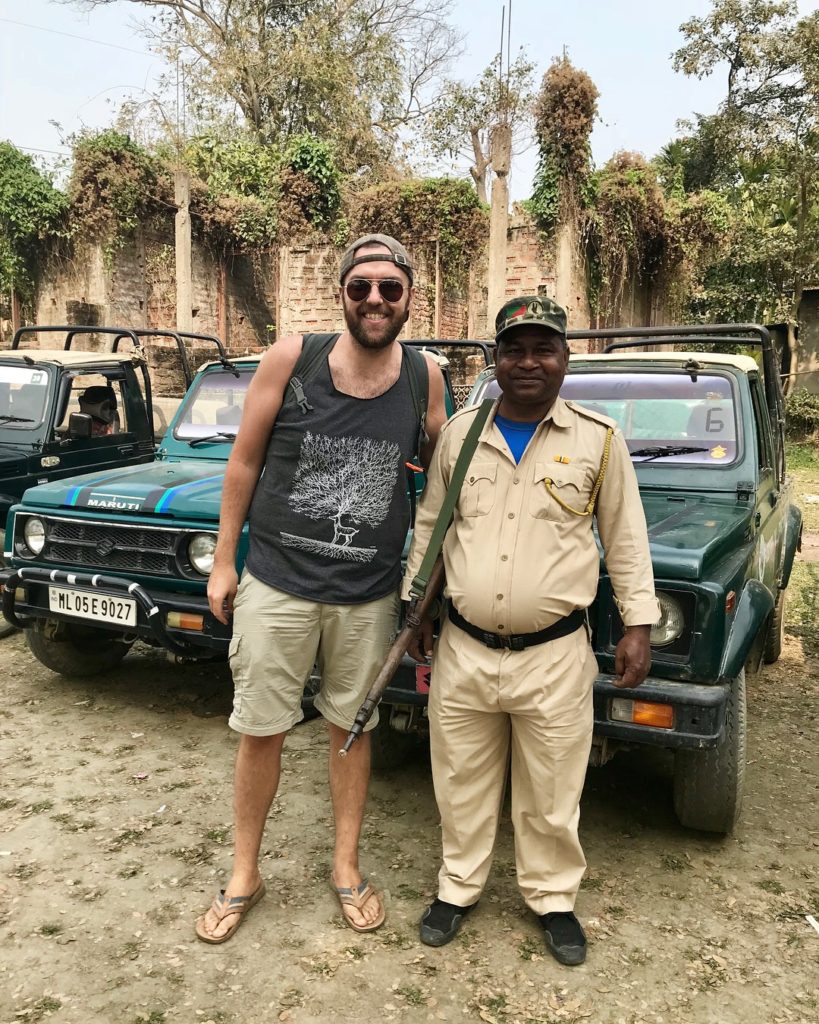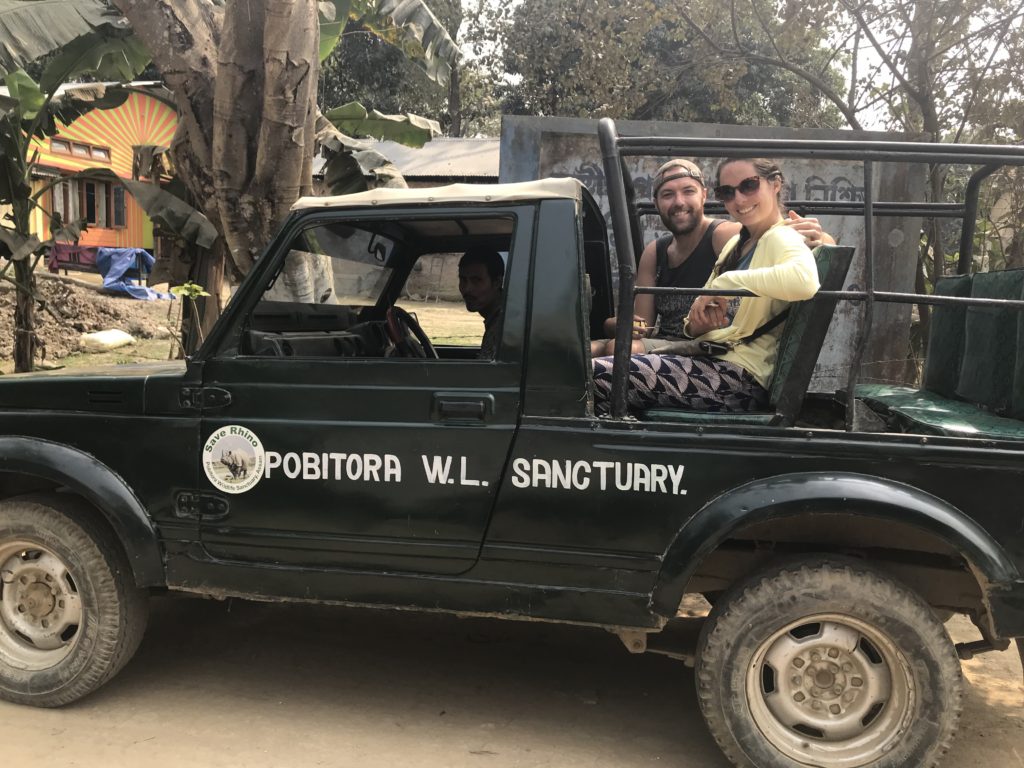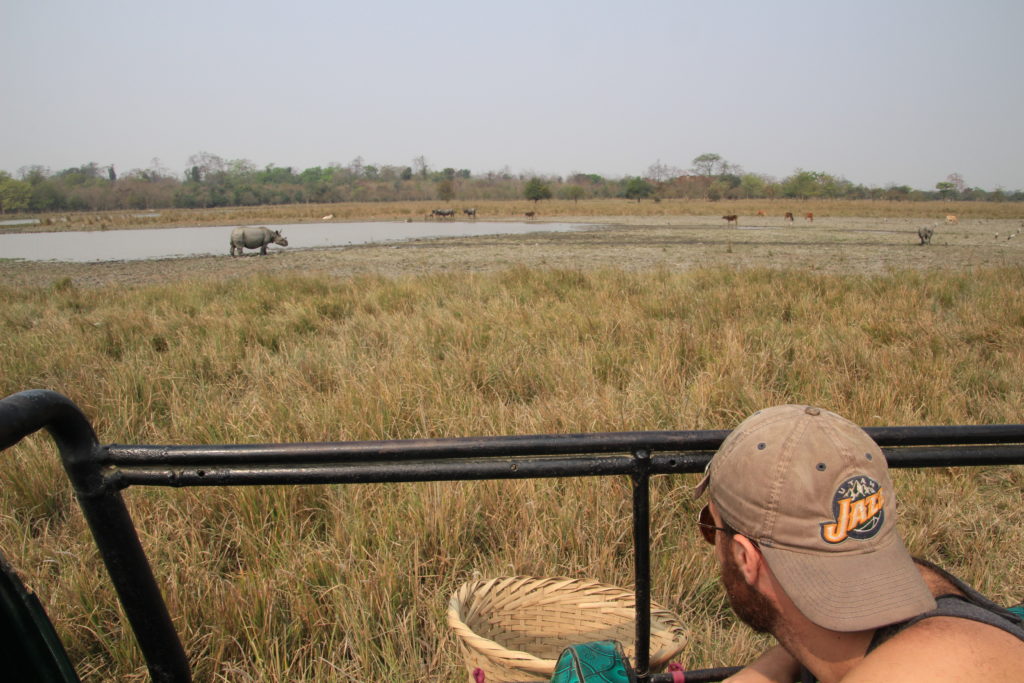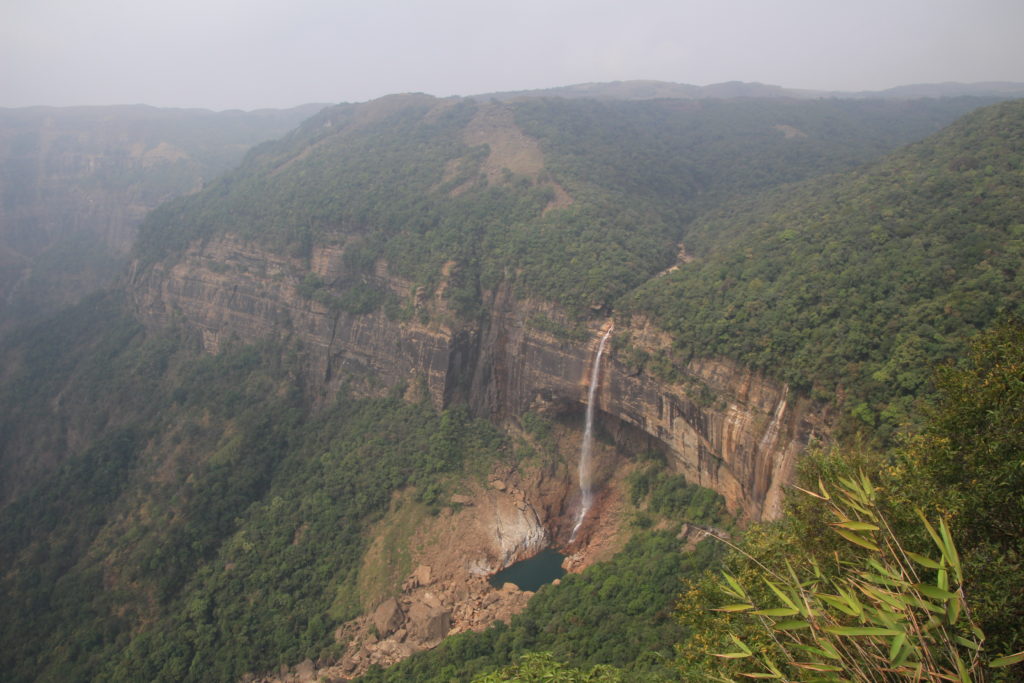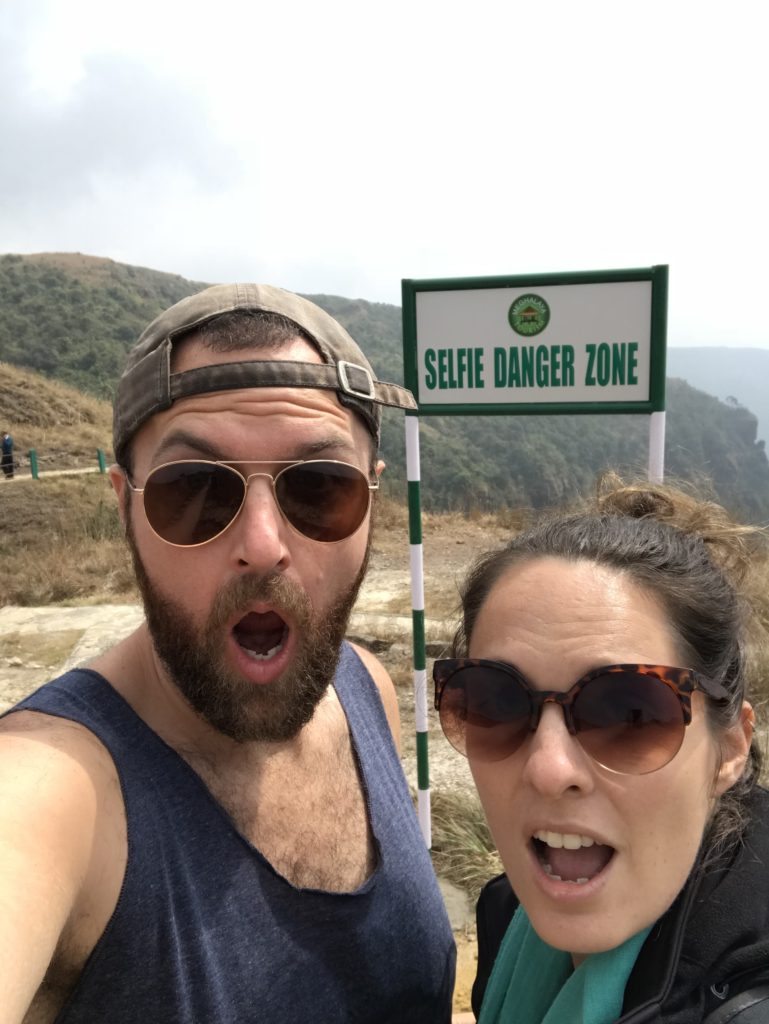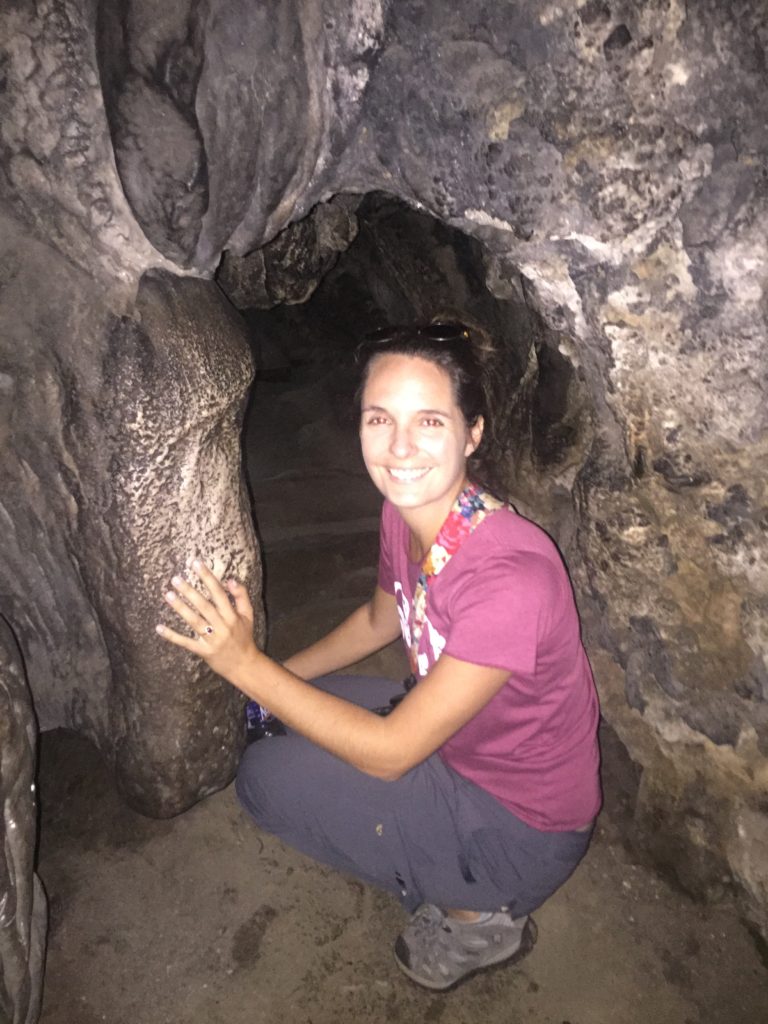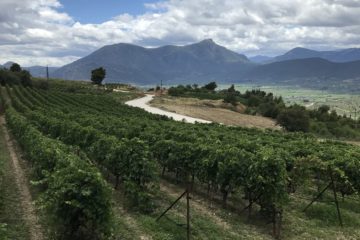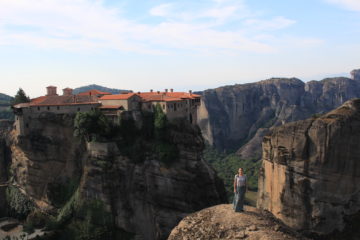The mental image most people have of India – and that we shared prior to this trip – is that the country is very large and diamond-shaped. Few people seem to realize that, from the northeast portion of the diamond, there is a thin strip of land that juts out and connects to a much larger portion (between Bangladesh and Myanmar) of land that is also part of India. Most people don’t visit this area, which is understandable – it’s super random. However, Jess and I each had very specific reasons for wanting to go there. Rhinos are my favorite animal, so I was super disappointed to effectively not see any when I went on safari in Tanzania last June. Fortunately for me, this region has the world’s highest concentration of one-horned rhinos, which got it on my list (Jess was pretty stoked for it as well). As for Jess, this is the only part of the world that contains surreal, living root bridges (which will be explained more later), which captured her imagination while we researched India and made her excited for this region (me too, to be fair). Hence, that’s how we ended up starting our time in India completely off the normal grid in the region/state of Assam.
Getting from Yangon, Myanmar to Guwahati, India – the first city in our Indian travels and “The Gateway to the North East” (apparently) – was pretty smooth, but included a couple of incidents that were a nice harbinger of things to come in India. Our flight required us to connect in Calcutta (aka Kolkata), India, which wasn’t a big deal overall. While proceeding through airport security there, an Indian soldier in full uniform scrutinized our documents, looked at us (a guy and girl travelling together) and asked in a very there-is-only-one-correct-answer voice “are you two married?” Caught off guard, we simultaneously stumbled through a mixed set of answers of “no…I mean yes…I mean, we just got married and are on our honeymoon, so we’re still getting used to saying it.” This became the lie – that we’re married, rather than engaged – for us to maintain during our time in India, since the question has arisen multiple times since then. The second feature was that after agreeing to a price for a taxi to our guesthouse in Guwahati, halfway through the ride our driver tried to jack up the price on us and forced us – at 11pm, in the dark in a random part of India and after having been in the country for no more than an hour – to curse him out and refuse to pay. We’ve learned (from experience, unfortunately) that this is a common occurrence in India. Awesome. [Editor’s note: It always takes a more subtle or believable form at first – the driver will claim that the roads are closed up ahead and we need to go a much longer way, which will cost more money; the driver will claim that the location marked on Google Maps is wrong, and it’s actually much farther, thus costing more; the driver will claim once we’ve arrived that it was more kilometers distance than we had originally agreed to, etc etc. We’ve learned to just hold our ground and keep insisting that we want to go to the GPS spot on the map (often directing the driver the entire way) and that we simply won’t pay more than we agreed no matter what. It’s exhausting, but after four or five of these it’s more amusing than anything else.]
Anyway, after a solid night of sleep in the cute guesthouse where we were staying in Guwahati, we arranged for a private car to take us to Pobitora National Park for the first highlight of our travels – rhinos! In an amusing turn of events, the driver provided by our guesthouse was a very sweet woman…who is a driving instructor and whose side hobby is entering into street rally races (she proudly told us how she took 6th out of 50 racers in her last race). Super awesome. [Editor’s note: While we have had plenty of adventurous driving conditions (to put it mildly) throughout Asia, India is no joke. Just getting from Point A to Point B involves swerving madly on both sides of the road, avoiding cows, motorbikes, rickshaws, pedestrians, giant trucks, potholes, stray dogs…it’s basically a street rally race every day from what I can tell. After we learned about our drivers’ hobby I felt a little better about our chances of making it in one piece.]
After an hour of driving we arrived at Pobitora National Park and were initially underwhelmed. There were just some dusty, discreet signs guiding us to the park, there were no tourists anywhere in sight and there was a convoluted, unclear fee system that we only sorted out after lots of wandering around and asking questions. Nevertheless, we secured our rickety jeep and armed guard (with a rifle that’s probably older than me) to begin our hour long safari…which turned out fantastic. The park is only 39 square kilometers and contains 93 rhinos, so within the first 30 minutes of our safari (read: bouncing around in the back of a tin box with wheels) we were able to see roughly 12 rhinos, including a couple merely 50 feet away. It was incredible to get so close to such massive animals and to be able to see them in their native habitat – a definite win.
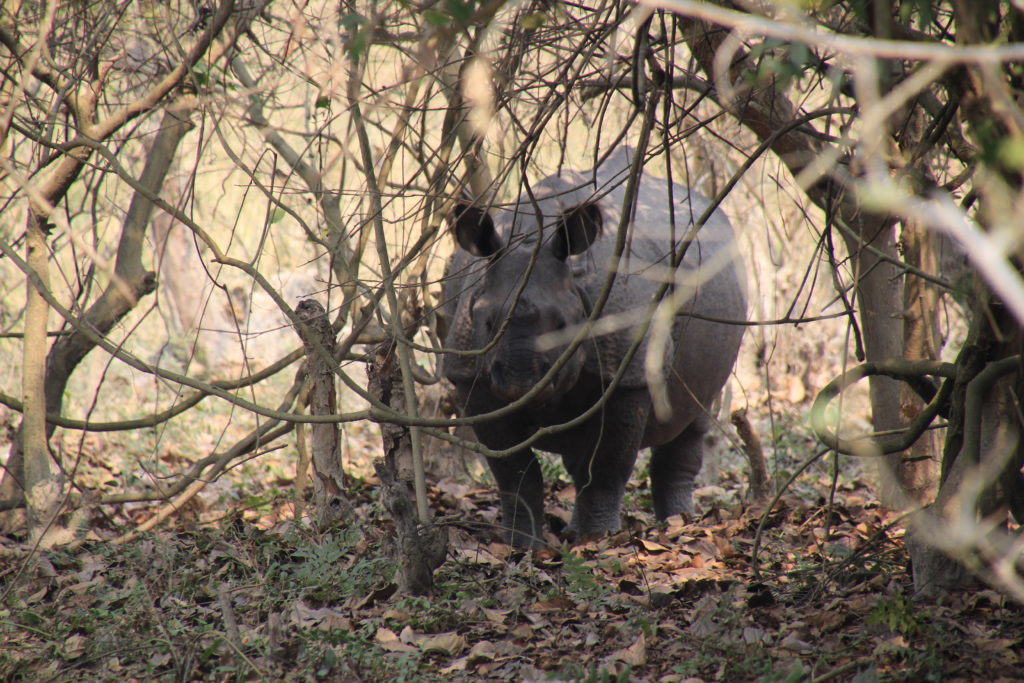
This is the first rhino we spotted, which is enough to make you a bit anxious when it’s staring you down like that.
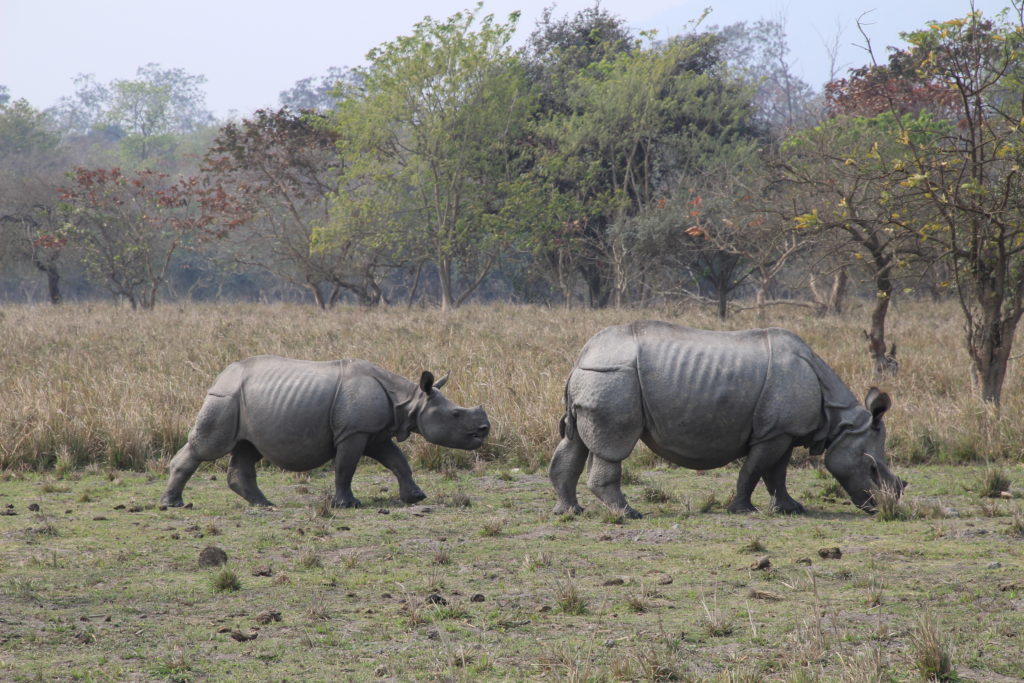
A mama rhino with her “adorable” baby (which probably weighs a metric ton and could kill any of us effortlessly).
After our visit to Pobitora National Park, our driver dropped us off at a mall in Guwahati to see a movie (The Black Panther, in 3D!) to get a taste of American culture we’ve been craving. We left the mall late at night and wandered out to the street to catch a rickshaw back to our guesthouse, but were struggling with haggling and even getting them to understand where it was located (fun fact: damn near nobody in Asia can read a map to save their lives) [Editor’s note: None of the rickshaw or taxi drivers seem able to read a map or follow a GPS dot, and yet they all have smartphones! How is this possible?]. Fortunately, a couple of youngish (mid-20s) guys came over, offered to help and successfully ordered an Uber for us. This was the first of several times in India where people approached us, we had our guard up because we were expecting to get screwed or scammed, but then they proved to be phenomenally helpful/kind without wanting anything in return – in this way India has kept us guessing for most of our trip. Further, once we were back in our hotel room, Jess immediately noticed that one of our plastic bags had been torn open and its contents strewn about. We alerted the guesthouse and collectively deduced that someone reached through the metal grate over our window to try and steal from our bags, but couldn’t reach anything more than some Myanmar souvenirs that they didn’t want. Nothing was missing and our guesthouse apologized profusely (knocking 30% off our room fees), but all of this has us a bit wary of India and the rigors of traveling here.
The following day we caught a shared taxi to Shillong, which is known as “The Scotland of the East” and is a couple of hours away via a super windy road. We were dropped off in the middle of the main bazaar in town and tasked with sorting out where our hotel was located…only to learn that they cancelled our booking while we were en route. It was stupid. [Editor’s note: We are learning to never assume ANYTHING in India. It’s an adventure.] Fortunately we stumbled upon a super helpful hotel that, while a smidge more expensive, was able to take us in, helped us arrange all of our subsequent travels and was located in the center of town so that we could walk to various restaurants and shops. It worked out well. With the help of the hotel, we arranged a day tour to some of the natural attractions located just outside of Shillong, all of which were nice but not really on a “wow” level. These included Elephant Falls and Nohkalikai Falls – each of which were nice, but not as impressive as usual since it’s not the rainy season now – and a visit to Mawsmai Cave, which wasn’t necessarily pretty but had the wonderful redeeming quality of allowing us to crawl and climb our way through the narrow passages as we explored.
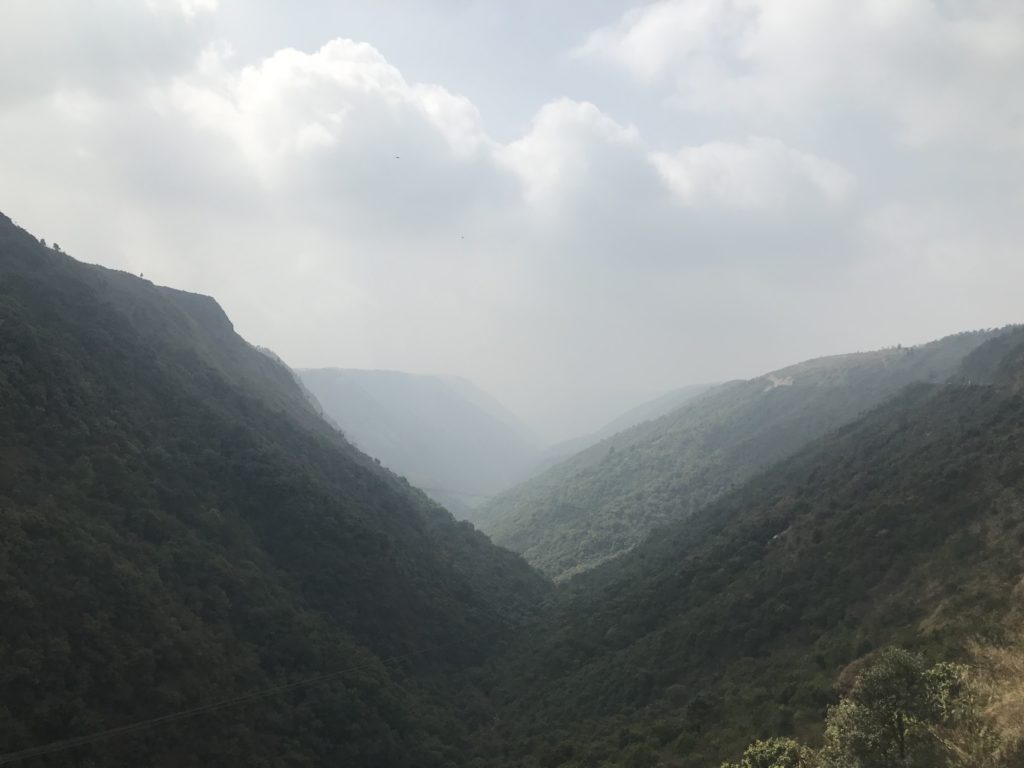
A view of the countryside around Shillong, providing evidence of why it’s known as “Scotland of the East”.
All of that was nice, but was also unspectacular. However, right before lunch, our driver asked if we were going to visit the double decker root bridge, to which we responded that we were planning to do it the following day. He shrugged and said, “We’re already here in Cherapunjee – why don’t you just do it now and give me a bit of extra money?” We looked at each other, unable to figure out a reason not to, and stammered back that we were on board. The reason we hadn’t planned on doing it all in the same day is that there is a fairly vigorous, time-consuming hike to get to the bridges (3700 steps down to the bottom of a valley, then a return trip back up the steps) and we weren’t sure we’d have time. But with our driver’s prodding, we decided to give it a go with the hope of making it there and back before sunset. [Editor’s note: I’d consider this more than “fairly vigorous.” We had been told to start early and allow pretty much all day for this hike, which is why we were planning to tackle it the following day. 3700 steps down means 3700 steps up, and starting this late meant we’d be racing the sun to get back before dark. On the other hand, it would save us a bunch of money and time trying to get another driver for the next day, so hey why not?]
So what are the root bridges? They are man-made (yet natural) structures where villagers “train” (How? We have no idea!) the roots of living rubber trees to grow across rivers and form natural bridges. It is said that it takes a new root bridge roughly 15 years to grow strong enough to support the weight of people crossing it, with it becoming stronger over time as the roots grow thicker. While root bridges are obviously amazing structures, the unbelievable thing is that one village managed to create a double decker root bridge (the only such bridge in the world!) after the initial lower level of the bridge was flooded on occasion by high waters.
To see the structures, our driver took us to the tiny, nearby village of Tyrna and pointed off in a direction and basically just said, “Good luck.” We moved rapidly to get down to the bottom of the valley, aided by the fact that the Indian government had built concrete steps to help with the process. Halfway down the hill we found a brief turnoff to explore a single-level root bridge, so we moved quickly to seize the opportunity and have our introduction to root bridges. Super cool! The rubber trees created an amazing tangle of branches that resulted in not just a super sturdy floor for the bridge, but they also extend far up and create functional railings as well. [Editor’s note: This was the most amazing part to me – it’s not just a single root over the river that you have to balance on; these are fully formed bridges with intricate railings, and they are totally solid. It’s gorgeous.]
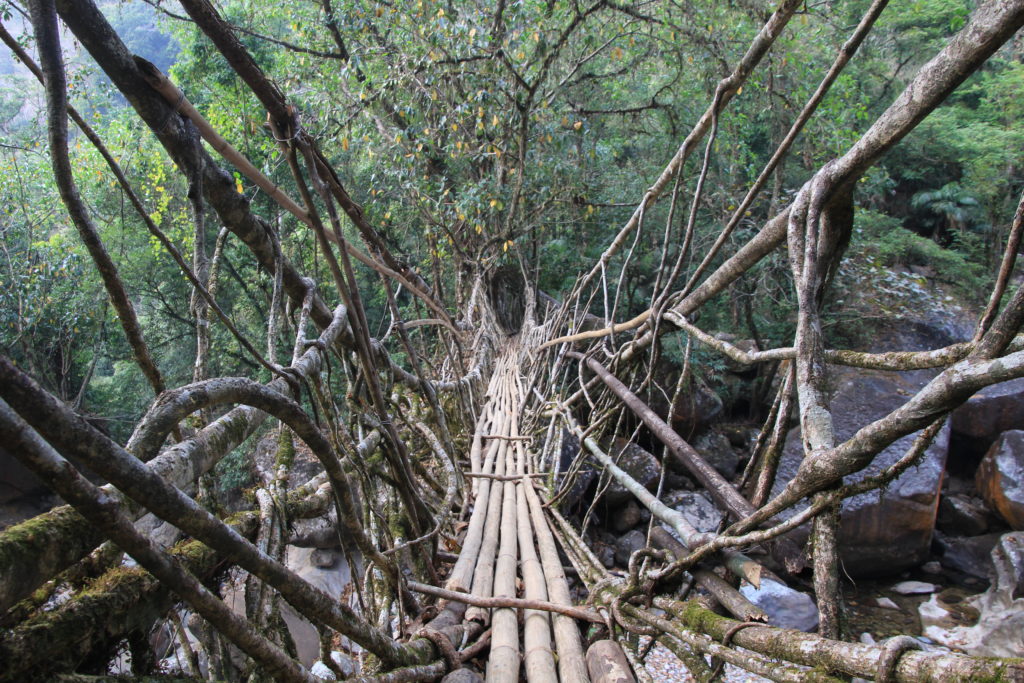
The first single-decker root bridge, which is also the longest. The “floorboards” have been added later for stability, but you can see the railings well in this picture and the whole thing is suspended by its own strength!
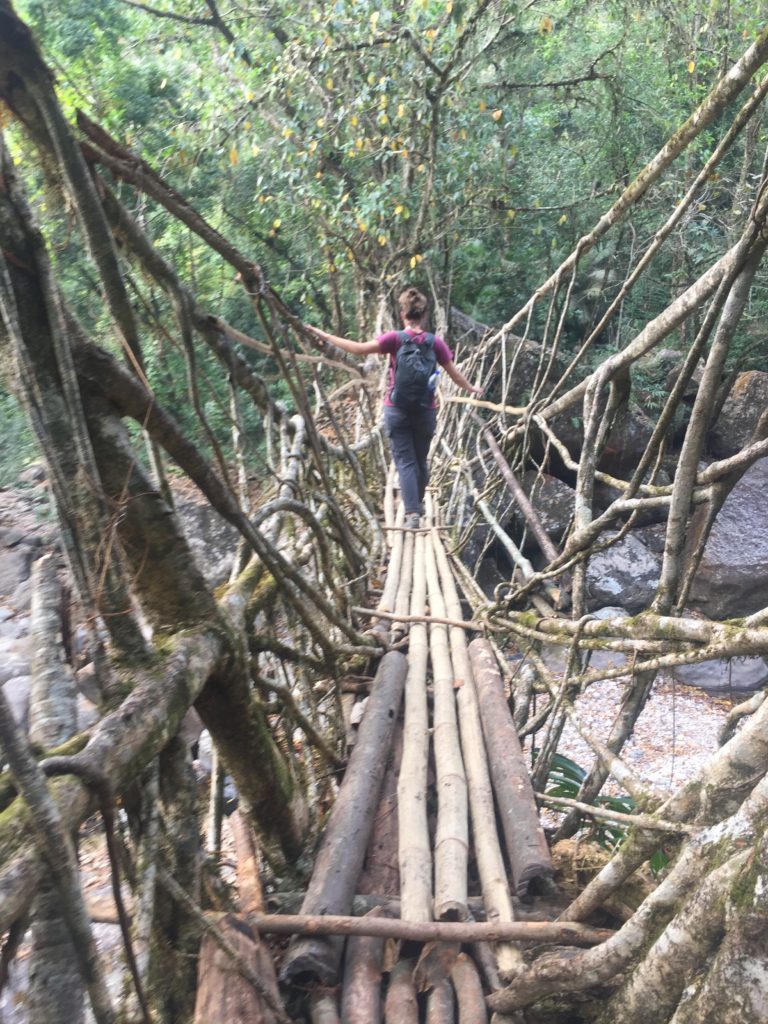
Walking across the root bridge.
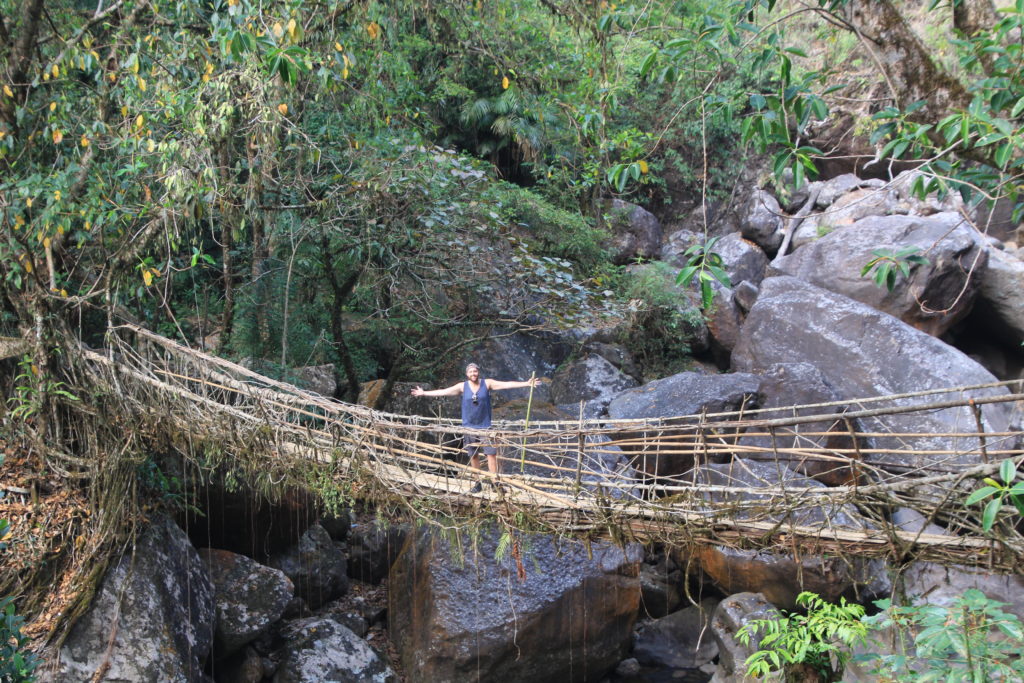
Rorie in the middle of the root bridge.
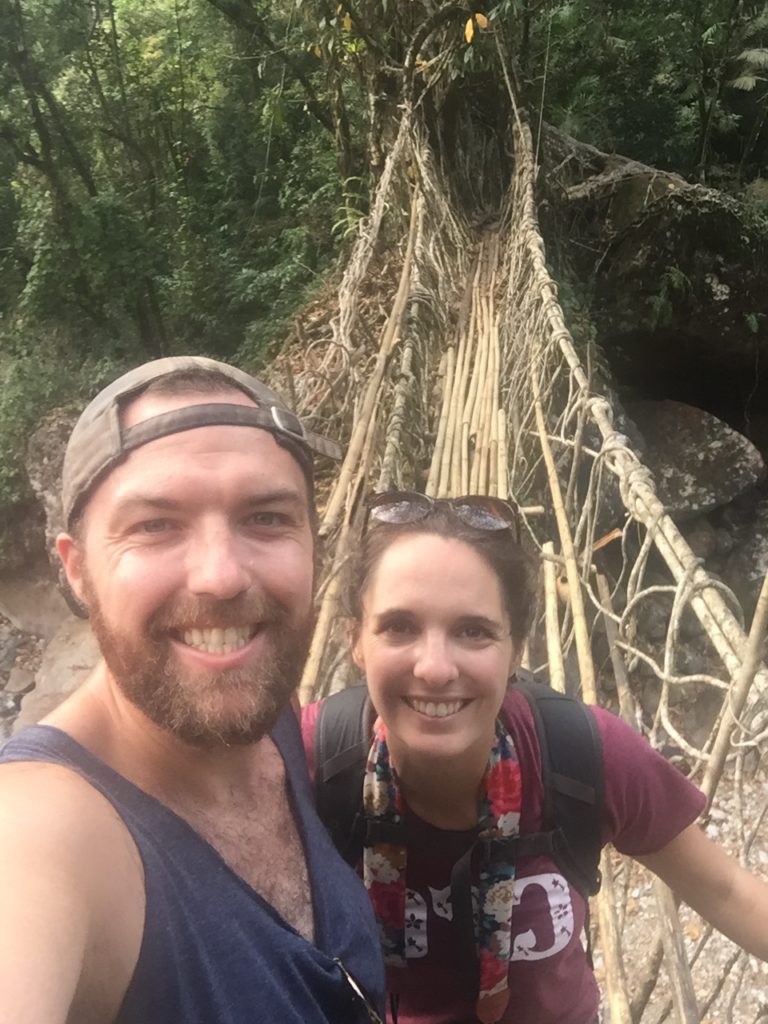
Now this seems like more of a selfie danger zone if I’m being honest.
We were smitten at that point and re-energized in our pursuit of the elusive double-decker bridge. With a bunch more effort we finally got there, and it was well worth our trouble. Put simply, it was easily one of the most impressive things I’ve ever seen. So unique and interesting…and it’s a damn good thing that’s the case, since we were then left trudging up 3700 steps with bamboo sticks as walking poles to get back to Tyrna where our driver was located. Luckily, despite our lack of exercise and physical activity over the last 6 months, we still managed to descend (50 minutes) and ascend (1.25 hours) faster than the norm (which tends to be 1.5 hours down and 2 hours back, according to our driver and hotel). We finished the day sweaty and exhausted, but also overjoyed at what we were able to see and experience.
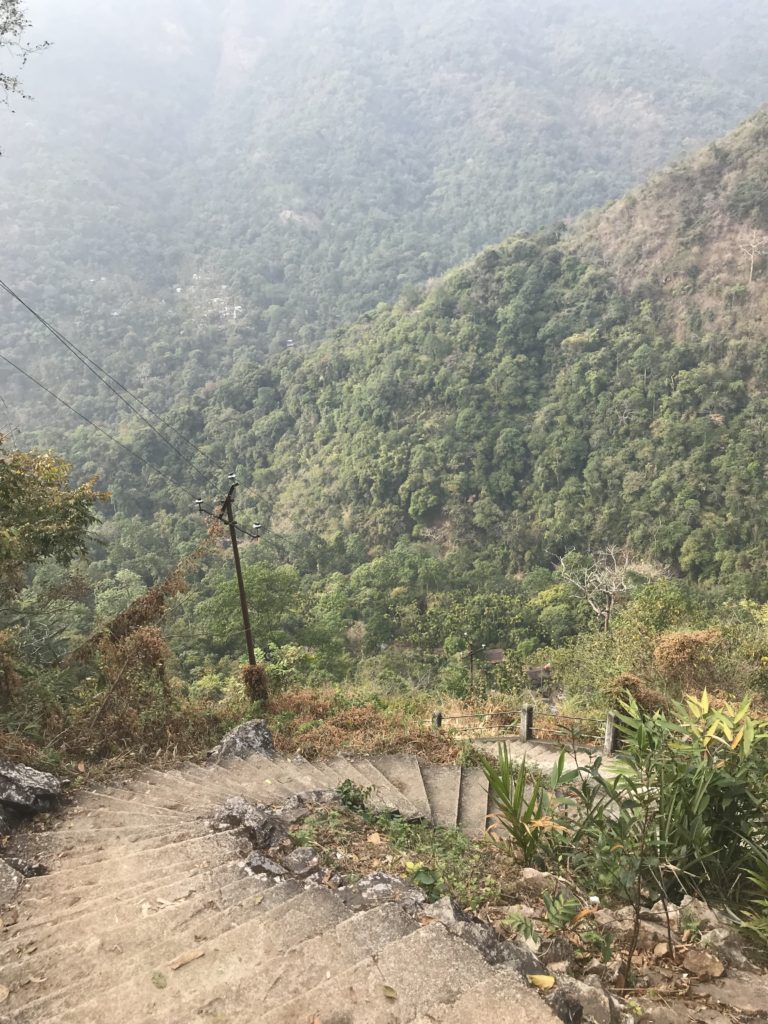
See all those stairs down? And see that little village speck off in the center/left on the farthest hill? That’s where the double-decker bridge was.
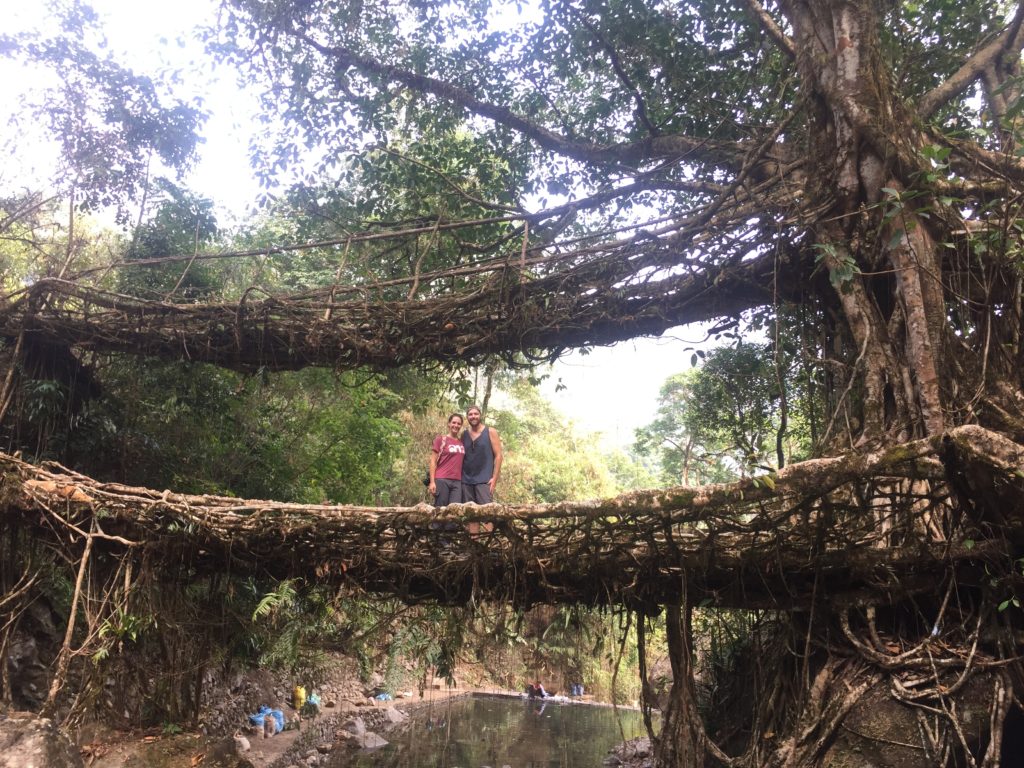
Here’s what we came for!
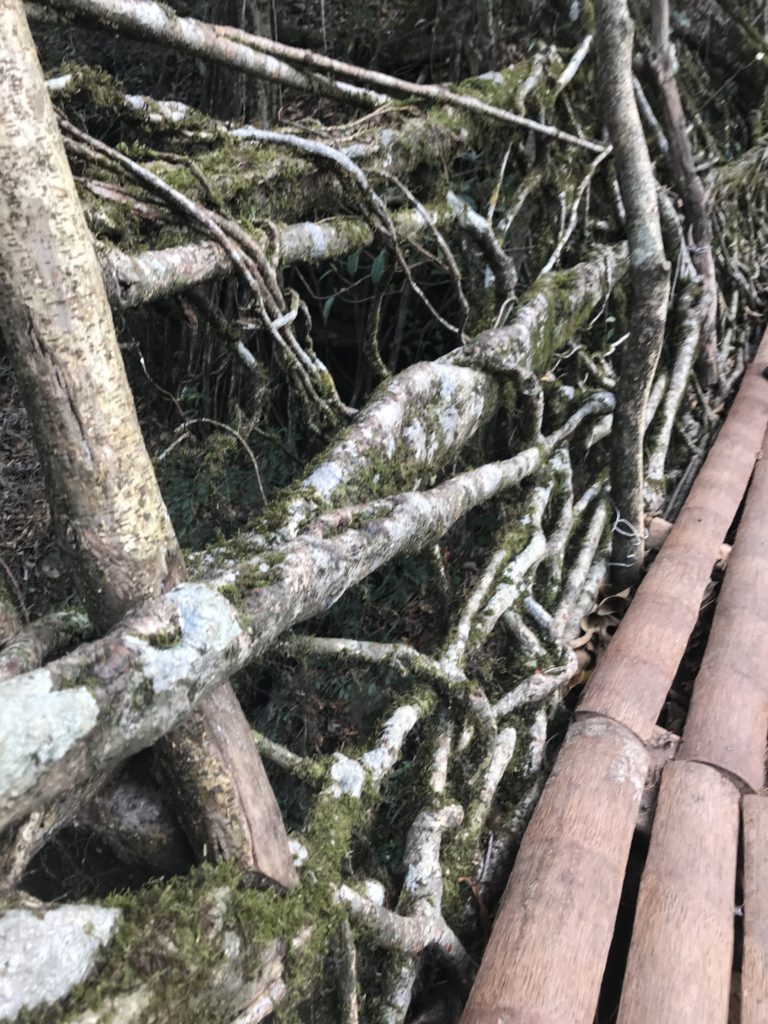
A close-up of the railing – it’s so intricate and incredible that it’s all living!
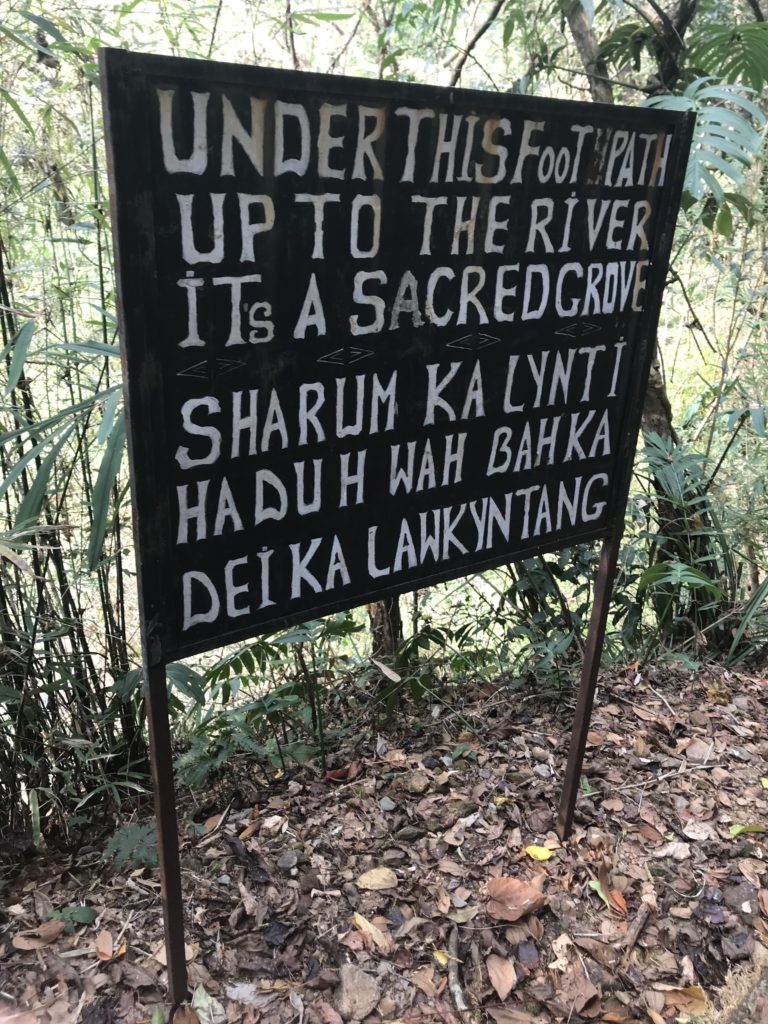
Sign on the trail shortly before reaching the bridge.
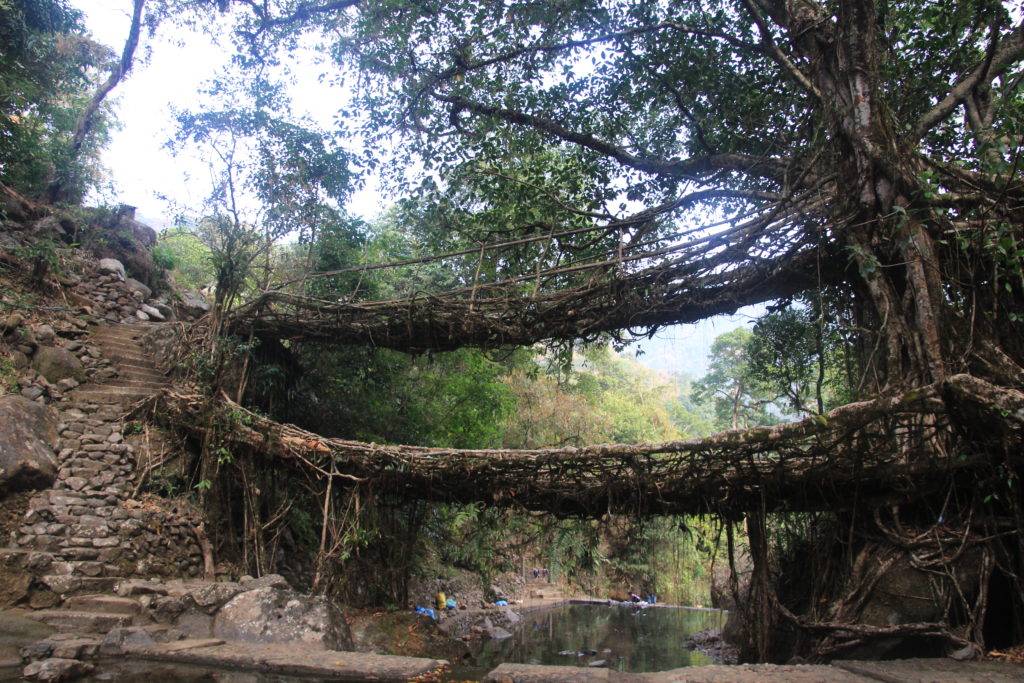
Such an incredible sight.
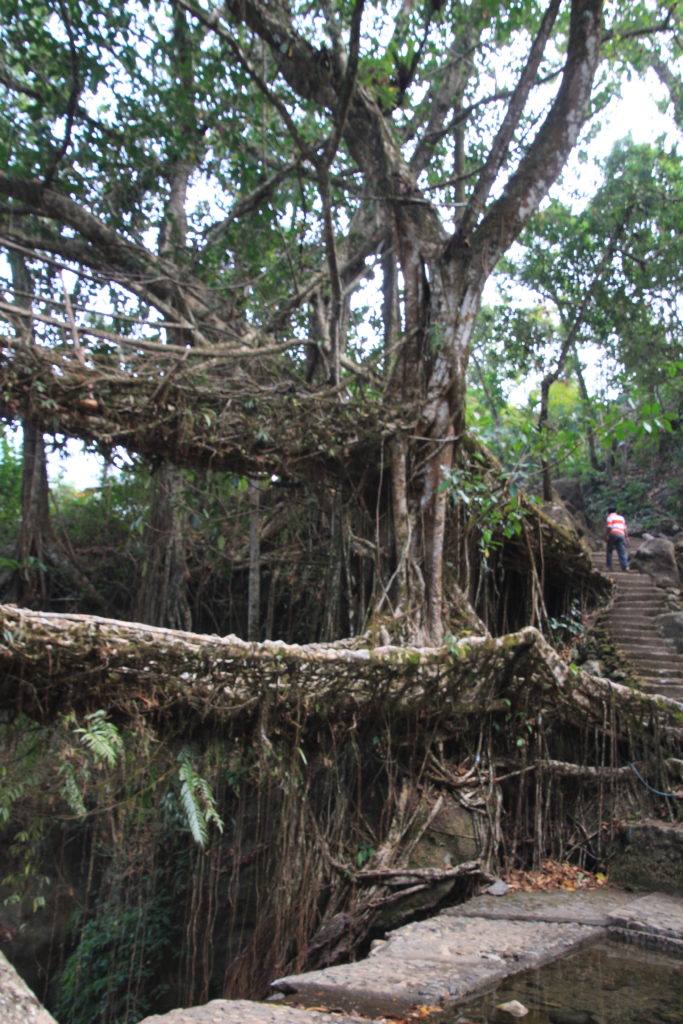
The main tree supplying the roots of the bridge.
Because we consolidated our general sightseeing and root bridge expedition into a single day, we ended up with a bit of free time to relax in Shillong, catch up on this blog and otherwise rest up a bit before diving into our travels in the main stretch of India. All told, I’m really pleased that we made it to this part of India. It gives us a truly unique set of experiences relative to normal backpackers (since most people don’t even know this area exists) and also allowed us to ease into the rigors of the country before going to the more touristy areas, where we’ve heard people target westerners and really try to scam them. [Editor’s note: I agree – this area really felt like a separate country from the rest of India, and felt much closer to Myanmar (which it literally is, as it shares a border) in terms of the pace and development for tourism (aka: not much). While the area itself didn’t wow us, the two things we came for – the rhinos and the root bridges – definitely lived up to the hype!] On to the next set of adventures – Delhi and Agra!
